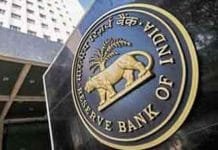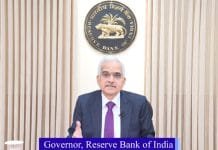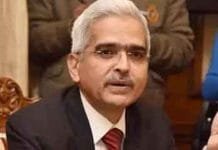The Reserve Bank of India (RBI) achieved a significant milestone in May by becoming the world’s third-largest buyer of gold, according to the World Gold Council. This strategic move saw India purchase gold worth approximately Rs 722 crore. Only Switzerland and China outpaced India in gold acquisitions during this period. Over the past five financial years, India has bolstered its gold reserves by an impressive 204 tonnes.
India’s Strategic Gold Reserves Growth
In March 2019, India’s gold reserves stood at 618.2 tonnes. By March 31, 2024, this figure had surged by 33 percent, reaching 822.1 tonnes. This substantial increase underscores India’s commitment to fortifying its financial stability and diversifying its reserves. The consistent accumulation of gold has been a strategic move by the RBI to mitigate risks associated with global economic uncertainties and currency fluctuations.
Impact of Rising Gold Prices on Reserves
During this period, the price of gold experienced a notable increase of approximately 70 percent. This surge in gold prices has had a profound impact on the valuation of India’s reserves. Despite the rising costs, the RBI’s continued investment in gold highlights its long-term view on the metal’s enduring value. The rising gold prices also reflect broader economic trends and the metal’s status as a safe-haven asset during times of economic instability.
Global Gold Market Dynamics
In May, the average daily trading volume in the global gold market was Rs 18 lakh crore. This figure represents a 13 percent decrease from April 2024 but is significantly higher—32.51 percent—than the daily average of Rs 13.6 lakh crore in 2023. The fluctuations in trading volume indicate varying levels of investor confidence and market activity influenced by economic conditions and geopolitical events.
Monthly Fluctuations in Gold Prices
May marked the third consecutive month of rising gold prices. However, towards the end of the month, there was a notable decrease in prices. On Friday, the price of jewellery gold (22 carat) fell by Rs 773 per 10 grams, settling at Rs 65,872. Similarly, the price of 24 carat gold dropped by Rs 844 to Rs 71,913 per 10 grams compared to the previous day. These fluctuations reflect short-term market corrections and investor reactions to changing economic indicators.
Rising Asset Under Management (AUM) in Gold
The inflows and higher gold prices contributed to a 2 percent rise in the total assets under management (AUM) in May, which reached $234 billion (approximately Rs 19.5 lakh crore). This growth in AUM highlights the increasing investor interest in gold as a secure investment vehicle. The growing AUM also underscores the trust investors place in gold as a means of wealth preservation amidst economic volatility.
India’s Strategic Gold Purchases
India’s strategic acquisition of gold aligns with its broader economic objectives. By increasing its gold reserves, the country aims to enhance its financial resilience and reduce dependency on foreign currencies. Gold’s intrinsic value and stability make it an ideal asset for safeguarding national wealth against economic downturns and inflationary pressures.
Historical Context and Future Outlook
Historically, gold has been a cornerstone of India’s cultural and economic landscape. The RBI’s proactive approach in augmenting gold reserves reflects a deep understanding of gold’s role in economic security. Looking ahead, India’s commitment to maintaining and potentially increasing its gold reserves signals a strategic foresight that aligns with global trends and economic forecasts.
Global Comparison and Strategic Positioning
In the global context, India’s position as the third-largest gold buyer in May places it ahead of numerous other nations, reflecting its robust economic strategy. This positioning not only strengthens India’s financial standing but also enhances its influence in the global gold market. The strategic accumulation of gold by the RBI is likely to continue, driven by a combination of economic prudence and foresight.
The Reserve Bank of India’s significant gold purchases in May underscore the nation’s strategic financial planning and economic foresight. By becoming the world’s third-largest buyer of gold, India has not only increased its gold reserves but also reinforced its financial stability. The rising gold prices and fluctuating market dynamics highlight the importance of gold as a resilient and valuable asset. As India continues to navigate global economic uncertainties, its growing gold reserves will play a crucial role in safeguarding national wealth and ensuring economic stability.


















